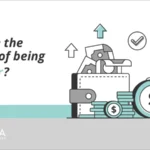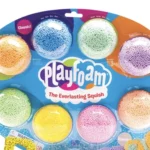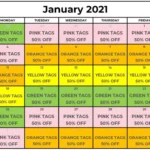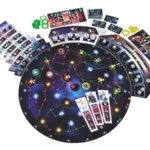Welcome to our educational insights article, where we explore innovative teaching methods, classroom organization, and exciting activities for your students. Our goal is to provide educators with the latest trends in education, including STEM education, accessible education, and sensory play. We understand that every student learns differently, which is why we will be discussing learning styles and how to cater to them in your classroom. Additionally, we will provide discounts and free activities for teachers, along with insights about who we are as a company. Get ready to discover new and exciting ways to engage your students and enhance their learning experience.
Contents
- Learning Styles
- Organizing Your Classroom
- Accessible Education
- STEM Education
- Sensory Play
- Discounts and Free Activities for Teachers
- About Us
- Conclusion
-
Frequently Asked Questions
- What are some benefits of STEM education?
- How can I incorporate STEM activities into my classroom?
- What is sensory play, and why is it important?
- What are some examples of sensory play activities I can use in my classroom?
- How can I make my classroom more accessible for students with disabilities?
- What are some benefits of incorporating technology into the classroom?
- How can I incorporate discounts and free activities into my classroom?
- What are some benefits of using manipulatives in the classroom?
- How can I create a classroom environment that fosters creativity?
- What are some benefits of small group learning?
- References
Learning Styles
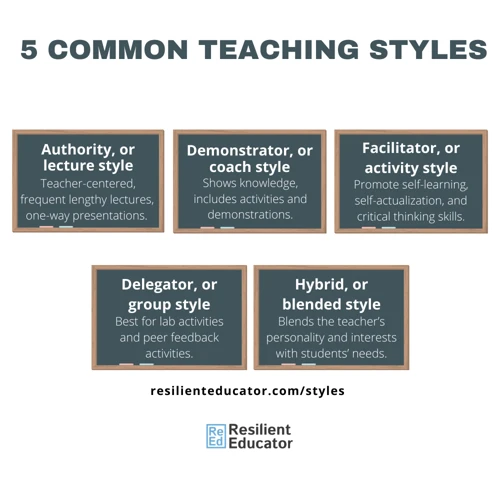
Understanding different learning styles is essential for educators to effectively teach their students. Visual learners prefer to learn through images, charts, and diagrams, while auditory learners prefer to learn through listening to lectures or participating in discussions. Kinesthetic learners, on the other hand, prefer to learn through hands-on activities and experiences. Educators should take these different learning styles into account when planning their lessons to ensure that all students have the opportunity to learn and succeed. By creating a classroom environment that caters to different learning styles, educators can help their students reach their full potential.
Visual Learners
Visual learners learn best through seeing information presented visually. These learners often prefer to read information rather than hear it spoken aloud. They may also benefit from visual aids such as diagrams, charts, or videos. As a teacher, it’s important to recognize that these students may struggle with purely auditory instruction and may need to see information presented in a way that makes sense to them visually.
To accommodate visual learners in the classroom, consider incorporating visual aids into your lessons. This could include creating diagrams or charts, using videos or animations, or providing written instructions in addition to verbal ones. You could also consider allowing visual learners to take notes or draw pictures during lectures.
One way to engage visual learners is to use educational games and activities that incorporate visual elements. For example, using online tools like ABCmouse or Adventure Academy, which provide interactive activities for young learners, can help visual learners stay engaged and learn effectively. Additionally, using board games that involve spatial reasoning, like maps for kids or space board games, can also be a great way to engage visual learners.
By understanding the needs of visual learners and incorporating visual aids and activities into your lessons, you can create a more inclusive learning environment that caters to the needs of all your students.
Auditory Learners
Auditory learners learn best by hearing and carefully listening. They are very likely to volunteer to answer questions and to actively participate in classroom discussions. If you’re an auditory learner, there are several techniques you can use to enhance your learning experience. One such technique is to record lectures and listen to them again later. This can help you pick up on key information that you may have missed the first time around, as well as reinforce what you already know. Another technique is to use mnemonic devices to aid in memorization. Mnemonics are memory aids that use words, phrases, or songs to help you remember information. For example, to remember the order of the planets in our solar system, you could use the mnemonic “My very eager mother just served us nine pizzas”.
To further enhance your learning experience, you can also participate in group discussions, debates, or study groups to help reinforce your understanding. Additionally, you can try drawing the text to pick out a portion of the text with especially vivid imagery. Instruct yourself to draw a picture of what the writing describes. This helps you with close reading and understanding of the text.
As an auditory learner, it’s important to advocate for yourself and your learning needs. Don’t be afraid to ask your teacher for extra time to process information or for audio recordings of classroom lectures. There are also many resources available online specifically designed for auditory learners. For example, you may want to check out ABCmouse for free, free ABC mouse, or ABCmouse.com for free to help enhance your learning experience.
Kinesthetic Learners
Kinesthetic learners are the ones who learn best through physical activity and hands-on experiences. They are often referred to as tactile learners. These learners need to move their bodies and use their hands to learn effectively. They enjoy activities that involve movement, such as dancing, acting, or sports. They also benefit from activities that allow them to manipulate objects, such as building blocks, puzzles, or experiments.
In the classroom, kinesthetic learners benefit from activities that involve physical movement and touch. They may enjoy acting out stories, using manipulatives during math lessons, or building models during science experiments. Teachers can also incorporate movement breaks into the lesson to help these learners stay engaged and focused.
One idea for incorporating movement breaks is to have a “brain break” every 20-30 minutes. During this time, students can stand up and stretch, do a quick exercise, or dance to a song. These breaks help to release excess energy and improve focus when it’s time to return to the lesson.
To cater to the needs of kinesthetic learners, teachers can also incorporate movement into assessments. For example, students can act out a scene from a story or use manipulatives to solve a math problem. This allows these learners to showcase their knowledge in a way that is best suited to their learning style.
Overall, kinesthetic learners thrive in an environment that allows for physical activity and hands-on experiences. By incorporating movement and touch into the classroom, teachers can help these learners reach their full potential.
Organizing Your Classroom
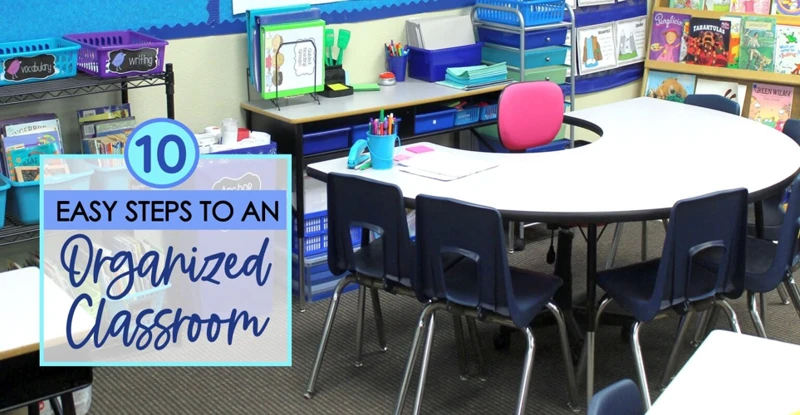
Organizing your classroom is an essential part of running a successful school year. Centers & Small Groups can be an excellent way to allow students to work independently while keeping them engaged in learning. Manipulatives are also a great tool to help students understand abstract concepts and keep them interested in the lesson. Demonstrations can be helpful to provide clarity and allow students to see how concepts work in a real-world setting. By using these methods, teachers can keep their classroom organized and ensure that their students are getting the most out of their education. Additionally, there are many maps for kids and space board games that can be used as STEM activities for your classroom.
Centers & Small Groups
Centers and small groups are a great way to differentiate instruction and meet the needs of all learners. It allows teachers to implement multiple activities at once, and students can rotate through the various centers. By working in small groups, students can receive more individualized attention and support from the teacher. These groups can be homogeneous or heterogeneous, depending on the desired outcome. Centers and small groups can be organized by subject area, learning style, or interest level.
One way to organize centers is to use a rotation schedule. This schedule can be weekly or daily, depending on the needs of the class. A weekly schedule allows students to spend more time at each center, while a daily schedule provides more variety. Another way to organize centers is to use a task card system. Task cards provide students with specific instructions for each center and can include a variety of activities.
In small groups, teachers can use guided reading or guided math to provide targeted instruction to students. During guided reading, teachers work with a small group of students who are reading at a similar level. The teacher provides support and instruction as the students read a text together. During guided math, teachers work with a small group of students who need additional support in a specific area of math. The teacher provides instruction and practice activities to help students master the skill.
Centers and small groups are an effective way to differentiate instruction and meet the diverse needs of students. By providing individualized support and instruction, teachers can help all students reach their full potential. To learn more about education, check out our free resources or Grammarly review for writing assistance.
Manipulatives
are objects that students can touch and move around to help them learn. They are particularly useful for kinesthetic learners. Examples of manipulatives include blocks, pattern blocks, counters, snap cubes, and geoboards. Manipulatives can be used in all subject areas, from math to science to social studies. They can be used for counting, sorting, patterning, graphing, and much more.
One way to organize manipulatives is to use a manipulative shelf. Each shelf can be labeled with the type of manipulative that goes on that shelf. This can help students find the manipulatives they need quickly and easily. Another way to organize manipulatives is to use manipulative bins. Each bin can hold a different type of manipulative. This makes it easy for students to grab the bin they need and take it to their workspace.
Manipulatives can be used for a variety of activities, such as:
| Subject | Activity |
|---|---|
| Math | Counting, sorting, patterning, graphing, measuring |
| Science | Exploring, investigating, experimenting, observing |
| Social Studies | Mapping, exploring, building, creating |
Using manipulatives can help students understand abstract concepts by making them more concrete. It can also help them retain information better because they are using multiple senses to learn. By incorporating manipulatives into your classroom, you are providing an accessible education for all learners.
If you are looking for free or discounted manipulatives for your classroom, check out ABCmouse.com or Adventure Academy reviews.
Remember, manipulatives are a powerful tool in any classroom. By providing students with hands-on learning experiences, you are helping them develop a deeper understanding of the concepts they are learning.
Demonstration
Demonstrations are a crucial component of effective teaching, especially for visual and kinesthetic learners. Demonstrations allow students to see and experience what they are learning, making the information more tangible and easier to remember. When planning a demonstration, it is important to consider the materials needed and the safety precautions that must be taken.
Here are a few tips for effective demonstrations:
- Make sure all students can see the demonstration clearly.
- Explain the purpose of the demonstration beforehand, and what students should expect to see.
- Break down the steps of the demonstration and explain each one clearly as you go.
- Check for student understanding throughout the demonstration by asking questions and encouraging participation.
- Summarize the demonstration at the end and encourage students to ask any questions they may have.
Whether you are demonstrating a science experiment or a math problem, remember to keep it engaging and interactive to capture students’ attention and increase their understanding. By incorporating demonstrations into your lessons, you can create a dynamic and memorable learning experience for all students.
If you want to improve your writing skills, consider using Grammarly Premium. It is a powerful tool that can help you identify and correct grammar and spelling mistakes in your writing. Check out our article on Is Grammarly Premium Worth It? to learn more.
Accessible Education
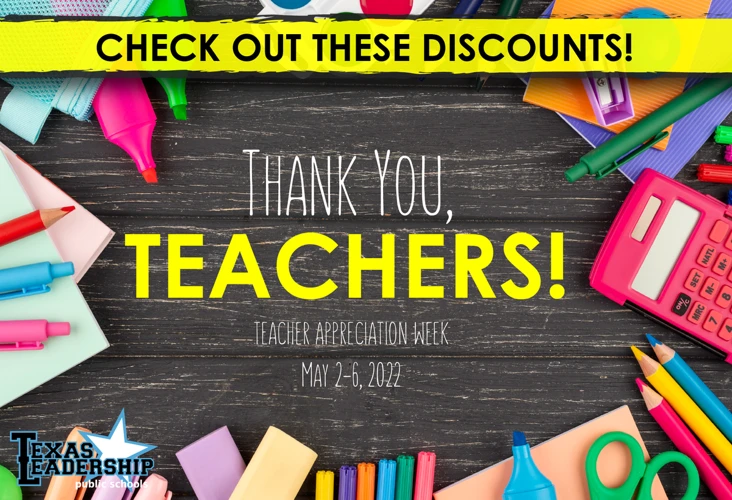
Making education accessible to all students is crucial for any classroom. Students with disabilities require special accommodations to learn effectively in a traditional classroom setting. It is essential for teachers to understand the various types of disabilities, their unique challenges, and the tools and technologies that can help overcome them. Accessible education ensures that students with disabilities have equal opportunities to learn and grow in the classroom.
One way to make education accessible is by using assistive technology. This technology helps students with disabilities participate in class activities, complete assignments, and interact with their peers. Some of these technologies include text-to-speech software, screen readers, and speech recognition software. Teachers can also use Universal Design for Learning (UDL) to make their lesson plans more accessible. UDL involves creating lesson plans that are flexible and can be adapted to meet the needs of all students, regardless of their abilities.
Another way to make education accessible is by providing accommodations for students with disabilities. These can include extra time for tests, preferential seating, and note-taking assistance. Teachers can also use differentiated instruction techniques to meet the needs of students with diverse learning styles. This involves tailoring lesson plans to the individual needs of each student, based on their strengths and weaknesses.
Accessible education is crucial for ensuring that all students have equal opportunities to learn and grow. By using assistive technology, UDL, accommodations, and differentiated instruction, teachers can create an inclusive learning environment that supports the needs of all students, including those with disabilities.
STEM Education
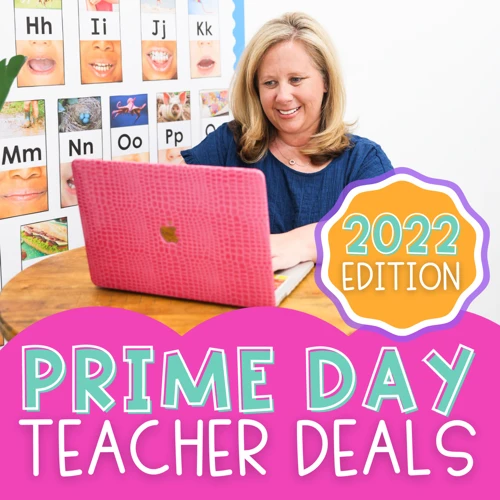
STEM education is a crucial component of modern education and is increasingly being emphasized in schools worldwide. The integration of science, technology, engineering, and mathematics (STEM) in education enables students to develop essential skills and capabilities for the future workforce. STEM education plays a vital role in preparing students for the challenges of the 21st century, including critical thinking, problem-solving, creativity, and innovation. STEM education opens doors for students to pursue high-demand careers in fields like medicine, engineering, and computer science. Incorporating STEM activities in classrooms is a great way to engage students in hands-on learning experiences and help them develop a passion for science and technology.
Why STEM Education is Important
STEM education is crucial for preparing students for the future of work and society. By learning about science, technology, engineering, and math, students develop skills that are essential for success in the 21st century. Here are some reasons why STEM education is important:
- STEM careers are in high demand: Many jobs in the future will require STEM skills. The Bureau of Labor Statistics predicts that employment in STEM occupations will grow by 8.8% from 2018 to 2028.
- STEM education promotes critical thinking: STEM subjects teach students how to think critically, solve problems, and make decisions based on evidence.
- STEM education fosters creativity: STEM subjects provide opportunities for creativity and innovation, which are essential skills for success in the modern world.
- STEM education encourages teamwork: STEM projects often require collaboration, which helps students develop teamwork skills that are valuable in the workplace.
- STEM education prepares students for the future: The world is becoming more reliant on technology, and STEM education prepares students for the challenges and opportunities of the future.
In short, STEM education is an important part of preparing students for the future. By developing skills in science, technology, engineering, and math, students will be better equipped to succeed in the 21st century.
STEM Activities for Your Classroom
STEM (Science, Technology, Engineering, and Math) education is crucial in today’s world, where technology is advancing rapidly and changing the way we live and work. Here are some STEM activities that you can incorporate into your classroom:
| Activity | Description |
|---|---|
| Build a bridge | Challenge your students to build a bridge using only popsicle sticks and glue. Then, test the strength of their bridge by seeing how many textbooks it can hold. |
| Design a roller coaster | Have your students use foam tubing and marbles to design and build their own roller coaster. Encourage them to experiment with different designs and heights. |
| Make a balloon-powered car | Give your students a balloon, a straw, and some wheels, and challenge them to build a car that can travel the farthest distance when powered by the balloon. |
| Create a Rube Goldberg machine | Have your students work in teams to design and build a Rube Goldberg machine that performs a simple task, such as turning on a light switch. |
| Grow plants | Teach your students about the plant life cycle by having them grow their own plants in the classroom. Encourage them to keep a journal of their plant’s growth. |
These activities not only teach your students about STEM concepts, but also help them develop critical thinking, problem-solving, and teamwork skills. Incorporating STEM activities into your classroom can inspire your students to pursue careers in STEM fields and prepare them for a rapidly changing world.
Sensory Play
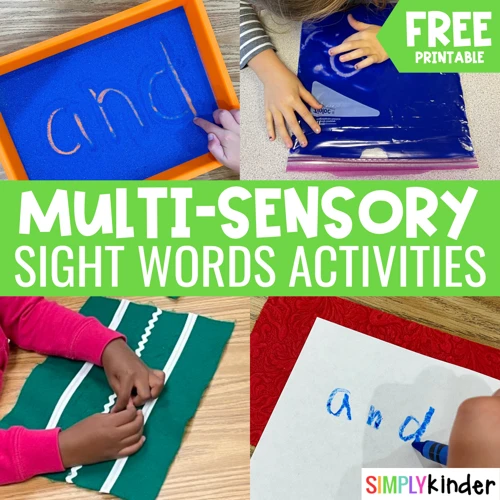
Sensory play is an important aspect of early childhood education as it stimulates the senses and helps children explore and make sense of the world around them. By engaging in sensory play, children develop their cognitive, social, emotional, and physical skills. It also provides opportunities for children to be creative and imaginative, as they experiment with different materials and textures. Sensory play activities can be easily incorporated into the classroom, using materials such as sand, water, playdough, and sensory bins. By providing a variety of sensory experiences, teachers can help children develop their sensory processing skills, which are essential for learning and development.
Why Sensory Play is Important
Sensory play is a crucial aspect of early childhood development as it helps children to explore and understand the world around them. Sensory play provides opportunities for children to engage in hands-on activities that stimulate their senses and promote learning. Through sensory play, children develop their cognitive, social, emotional, and physical skills.
Developing Cognitive Skills: Sensory play helps children develop their cognitive skills by encouraging them to use their senses to explore and make sense of their environment. As children engage in sensory play, they learn to identify differences and similarities between objects, textures, colors, and shapes. This helps them to develop their problem-solving, critical thinking, and decision-making skills.
Developing Social Skills: Sensory play also promotes the development of social skills in children. When children engage in sensory play with other children, they learn to communicate, share, and work together. This helps them to develop their social skills, including cooperation, negotiation, and empathy.
Developing Emotional Skills: Sensory play provides children with opportunities to explore their emotions and express themselves in a safe and supportive environment. As children engage in sensory play, they learn to regulate their emotions, manage stress, and develop a positive self-image.
Developing Physical Skills: Sensory play also promotes the development of physical skills in children. When children engage in sensory play, they use their muscles and develop their fine and gross motor skills. This helps them to develop their coordination, balance, and spatial awareness.
Sensory play is an essential aspect of early childhood education that helps children to develop their cognitive, social, emotional, and physical skills. Through hands-on exploration, children learn to make sense of the world around them and develop critical life skills that will benefit them throughout their lives.
Sensory Play Activities for Your Classroom
Sensory bins: Fill a plastic tub with various materials such as rice, beans, pasta, sand, or water beads. Children can explore the different textures and colors with their hands and tools like spoons or scoops.
Finger painting: Provide children with non-toxic paint and paper. Encourage them to use their fingers to create different designs and explore the texture of the paint.
Scented playdough: Make homemade playdough and add different scents such as lavender, peppermint, or lemon. Children can use their sense of smell to explore the scents and their hands to manipulate the playdough.
Sensory bottles: Fill empty plastic bottles with a variety of materials such as glitter, beads, or water. Children can shake and explore the bottles to see how the materials interact with each other.
Sensory walks: Create a sensory path using different materials such as bubble wrap, sandpaper, or carpet squares. Children can walk barefoot on the path to feel the different textures.
Texture collages: Provide children with a variety of textured materials such as fabric, feathers, and cardboard. Encourage them to cut and glue the materials onto a piece of paper to create a collage.
Sound exploration: Provide children with different instruments such as drums, shakers, and bells. Encourage them to explore the different sounds and rhythms they can create.
Taste testing: Provide children with a variety of foods with different tastes such as sweet, sour, salty, and bitter. Encourage them to explore the different tastes and describe them using words.
Smell jars: Fill small jars with different scents such as cinnamon, vanilla, or coffee. Children can use their sense of smell to explore the different scents and describe them using words.
Visual sensory bags: Fill a plastic bag with a variety of materials such as glitter, beads, or confetti. Seal the bag and encourage children to explore the materials by squishing and manipulating the bag.
Discounts and Free Activities for Teachers
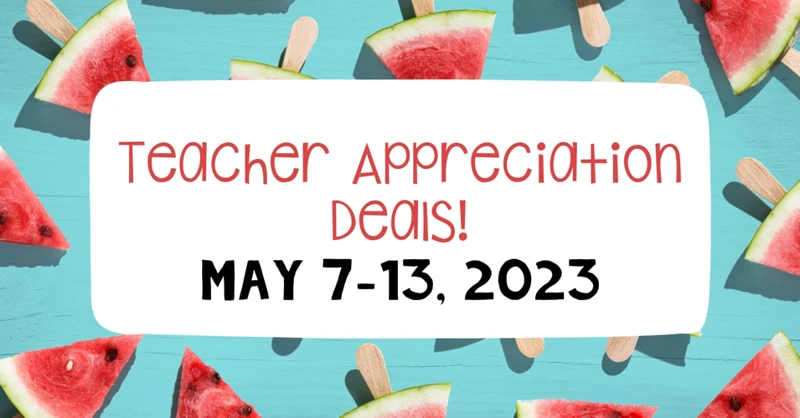
As educators, we understand the importance of providing students with engaging and enriching learning experiences. However, we also know how difficult it can be to find the necessary resources to make that happen. That’s why we’ve compiled a list of discounts and free activities for teachers, to help make your job a little easier and your students’ learning experience a little more exciting.
Discounts:
- Amazon Prime: Sign up for Amazon Prime with your .edu email address and receive six months of free Prime membership, which includes free two-day shipping and exclusive discounts.
- Barnes & Noble: Join the Barnes & Noble Educator Program and receive 20% off the publisher’s list price on all purchases for classroom use.
- Michaels: Teachers receive 15% off all in-store purchases with a valid school ID.
- Office Depot/OfficeMax: Join the Office Depot/OfficeMax Rewards Program and receive 2% cashback on purchases, as well as exclusive discounts and coupons.
Free Activities:
- Virtual Field Trips: Take your students on a virtual field trip to explore the world from your classroom. Check out sites like Discovery Education and Google Expeditions for a variety of free virtual trips.
- Classroom Mysteries: Download free classroom mysteries from Mystery Science to engage your students’ critical thinking skills and problem-solving abilities.
- STEM Activities: Access a variety of free STEM activities and lesson plans from sources like NASA and the National Science Foundation.
- Library Programs: Visit your local library and inquire about free programs and resources available for educators, including book clubs, author visits, and educational material loans.
We hope this list of discounts and free activities for teachers helps you provide your students with the enriching learning experience they deserve. Keep checking back for updates and new resources to add to your toolbox.
About Us
At our website, we are dedicated to providing teachers with the resources they need to create engaging and effective classrooms. Our team is made up of experienced educators who understand the challenges that teachers face every day. We offer a variety of products and services, including e-journals, STEM activities, and sensory play ideas, all designed to help teachers create inclusive and accessible classrooms. In addition to our shop, we also have a blog where we share educational insights and tips. Our goal is to support teachers in their mission to provide high-quality education to students of all backgrounds and abilities.
Who We Are
We are a team of educators and educational experts passionate about providing high-quality educational resources and insights to teachers and parents alike.
Our team is made up of certified teachers, curriculum developers, and education researchers who are dedicated to staying up-to-date on the latest trends and best practices in education. We believe that every child deserves a quality education and that teachers and parents play a critical role in helping children reach their full potential.
At our core, we are committed to providing accessible and affordable resources to educators and parents. We understand that teaching can be a challenging and often thankless job, so we strive to make it easier by offering discounts and free activities to help educators save time and money.
Additionally, we are committed to promoting STEM education and sensory play, two areas that we believe are essential for helping children develop critical thinking, problem-solving, and creativity skills. We offer a variety of STEM activities and sensory play ideas that are easy to implement in the classroom or at home.
We are proud of the work we do and the impact we have on educators and children. Our goal is to continue to provide valuable educational resources and insights to help teachers and parents create meaningful learning experiences for children of all ages.
Shop
Looking for discounted educational materials, classroom supplies and resources? Look no further than our online shop! We offer a wide range of STEM kits, art supplies, books, posters, and manipulatives to enhance your teaching and engage your students. Our products are carefully selected to meet curriculum requirements, and we offer competitive pricing to ensure you get the best value for your money. Plus, our online shop is open 24/7, so you can browse and purchase at your convenience. Don’t miss out on our limited-time offers and promo codes for additional savings. Sign up for our newsletter to stay up-to-date on our latest products and discounts. Shop with us today and take the first step towards creating an inspiring and engaging learning environment for your students!
Blog Home
Looking for fresh ideas to improve your classroom experience? Look no further than our page. Our team of experienced educators and experts regularly share insights, tips, and strategies to help you create a more engaging and effective learning environment.
Whether you’re looking for new activities to incorporate into your STEM curriculum, tips for organizing your classroom, or ideas for sensory play, our blog has you covered. Our articles are designed to be accessible and applicable for educators of all levels, from new teachers to seasoned veterans.
Some of our most popular topics include STEM education, organizing your classroom, and the benefits of sensory play. We also offer a range of resources and free activities for teachers, including discounts on classroom materials and educational games.
Be sure to check back regularly for new content and updates, or sign up for our newsletter to receive the latest articles directly in your inbox. With our help, you can create an exciting and rewarding learning experience for your students.
Learn
As teachers, we are constantly learning and growing in our profession. Continuing education is critical to staying up-to-date on the latest teaching strategies, technologies, and trends. There are a variety of resources available to educators looking to enhance their professional development. Some options include attending conferences and workshops, participating in online courses, and joining professional organizations. These opportunities provide valuable insights and allow you to connect with other educators who share your passion for teaching. Additionally, staying current on educational research can help inform your teaching practices and improve learning outcomes for your students. Consider subscribing to educational journals or following respected educational blogs and social media accounts to stay informed. Remember, investing in your own education is an investment in the future success of your students.
Conclusion
In conclusion, understanding different learning styles and incorporating them into your teaching practices can greatly benefit your students. By using a variety of teaching methods and resources such as manipulating materials and sensory play, you can create an inclusive and engaging learning environment for all students, regardless of their abilities. Additionally, incorporating STEM education into your curriculum can help your students develop critical thinking, problem-solving, and collaboration skills that are essential for their future success. Don’t forget to take advantage of the discounts and free activities available for teachers to enhance your classroom experience and save on costs. At [company name], we are passionate about supporting educators and providing them with the resources they need to succeed. Explore our shop, blog, and learning resources to discover more ways to enhance your teaching practices and create a positive impact on your students.
Frequently Asked Questions
What are some benefits of STEM education?
STEM education helps students develop critical thinking and problem-solving skills, which are essential for success in many careers. It also encourages creativity and innovation, and prepares students for the rapidly changing job market.
How can I incorporate STEM activities into my classroom?
You can incorporate STEM activities into your classroom by using hands-on projects, incorporating technology, and encouraging teamwork. You can also use real-world examples to help students understand the practical applications of STEM concepts.
What is sensory play, and why is it important?
Sensory play is any activity that stimulates the senses, such as touch, smell, and sight. It is important because it helps children develop sensory processing skills, which are essential for learning and development.
What are some examples of sensory play activities I can use in my classroom?
Examples of sensory play activities include sand and water play, sensory bins, play dough, and finger painting. You can also incorporate sensory elements into other activities, such as adding scents to science experiments or using textured materials in art projects.
How can I make my classroom more accessible for students with disabilities?
You can make your classroom more accessible by providing accommodations such as assistive technology, visual aids, and flexible seating. You can also work with students and their families to create individualized education plans that address their specific needs.
What are some benefits of incorporating technology into the classroom?
Incorporating technology into the classroom can help engage students, personalize learning, and provide access to a wider range of resources. It can also help prepare students for the digital world they will encounter in their future careers.
How can I incorporate discounts and free activities into my classroom?
You can look for discounts on classroom supplies and materials by shopping at discount stores or using online coupons. You can also look for free activities and resources online, such as lesson plans, educational videos, and interactive games.
What are some benefits of using manipulatives in the classroom?
Using manipulatives in the classroom can help students develop math and science skills, improve their problem-solving abilities, and make learning more engaging and interactive. It can also help students understand abstract concepts by providing concrete examples.
How can I create a classroom environment that fosters creativity?
You can create a classroom environment that fosters creativity by encouraging students to think outside the box and take risks, providing opportunities for collaboration and teamwork, and incorporating art and music into the curriculum. You can also give students the freedom to explore their interests and passions.
What are some benefits of small group learning?
Small group learning can help students develop social skills, improve their communication and collaboration abilities, and provide personalized attention from the teacher. It can also help students develop self-confidence and a sense of responsibility for their own learning.

